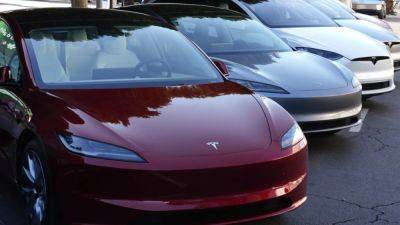Do EVs hold their value? Here's how electric cars fare on the second-hand market
Welcome to The Switch, Euronews Next's new mobility series for people considering making the switch to an EV.
As the pace of electrification quickens amid a growing climate crisis and an uncertain economic outlook, we'll be your companion as you make the transition from your fossil-fuelled car to electric.
Each week, we’ll offer guidance and insights from industry experts as well as aim to demystify the process and dispel misinformation.
Depreciation is one of the most significant costs in vehicle ownership. The moment a car leaves the dealership, it begins to lose value, and over time, mileage and wear further reduce its resale price.
But how do electric vehicles (EVs) hold up compared to internal combustion engine (ICE) vehicles? Do they retain their value better or depreciate faster?
Depreciation refers to the difference between what you originally paid for your car and its current market value.
Across Europe, most cars lose about 50 per cent of their value in the first three years, with the depreciation rate slowing by the fourth to fifth year.
By eight to 10 years, many vehicles have lost the majority of their value.
The rate at which a car depreciates depends on several factors, including mileage, condition, supply and demand, brand, and model.
For electric cars, additional factors come into play, such as battery health, technological advancements, and government policies.
A recent Italian study found that national fiscal policies significantly impact depreciation by influencing purchase prices and the residual values of cars.
For example, in some countries, a Tesla Model 3 is up to €8,524 cheaper than a Toyota Corolla due to subsidies, while in others, it can be as much as €6,590 more expensive.
The tax burden








